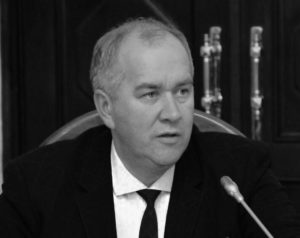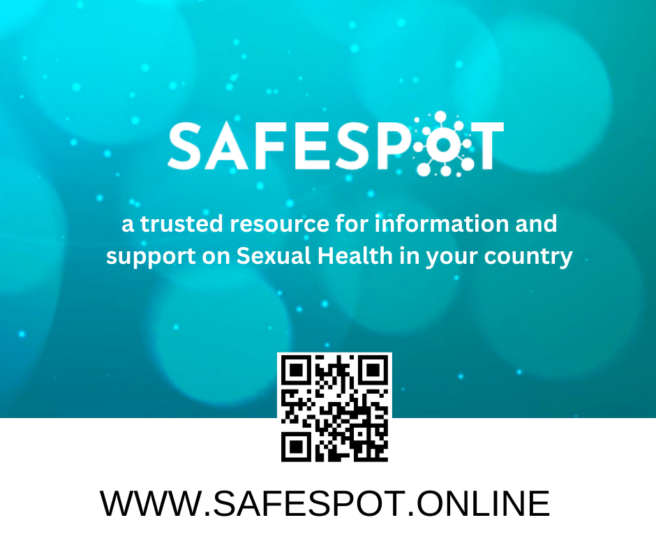
Author: Yana Kazmirenko, Ukraine
To learn about the benefits for the Ukrainian cities joining the Fast-Track Cities initiative and about the expectations from AIDS 2018 conference to be held in Amsterdam, read the interview with Vladimir Kurpita, Head of the Public Health Centre of the Ministry of Health of Ukraine. According to him, though Ukraine is one of the leading countries in terms of the number of people living with HIV, the government does its best to cover such people with treatment.
– What successes and challenges of Ukraine related to HIV response will be presented at the XXII International AIDS Conference in Amsterdam (AIDS 2018)?
– Today Ukraine is the second country in the European region with the biggest number of people living with HIV. Only Russia is ahead of us. In our country, there are over 230 thousand people living with HIV, while 146 thousand have been diagnosed with HIV and receive care. The HIV epidemic in Ukraine is a problem of big cities, industrial metropolises and is still concentrated in the key populations (people who inject drugs, men who have sex with men, sex workers). The issue of HIV is in the focus of attention in our country. Currently, the seventh national HIV programme is implemented, which is a result of the effective cooperation among the international partners, governmental agencies, and civil society organizations. The governmental policies may be illustrated with the fact that Ukraine is one of the few post-Soviet countries where prevention programmes, in particular, the opioid substitution treatment programme, are funded from the national and local state budgets.
The issue of detecting new HIV patients who are not aware of their diagnosis is on our agenda. In particular, we change the testing algorithms and are ready to intensively promote self-testing. A significant achievement is the fact that people already know that they can live with HIV.
– Today, over 90 thousand people receive HIV treatment in Ukraine, and it is expected that this coverage will be increased to 196 thousand people by 2020. What will help to make it happen?
– As of 1 April 2018, over 98 thousand people received HIV treatment in Ukraine. We are actively scaling up access to treatment. Currently, the therapy is offered in more than 300 healthcare institutions and in 100 places of confinement. In 2014-2016, there were certain problems with access to antiretroviral treatment at the local level, but now the situation has been improved.
Ukrainian patients have access to innovative drugs. Besides, the cost of treatment is reduced through the use of generic drugs. Today, the average cost of treatment course is less than USD 200 a year. Now the treatment is easier both for the doctor and the patient. If the treatment is initiated on time, one pill a day will be enough.
The healthcare reform in Ukraine stipulates that testing and prescription of the first treatment scheme may be provided by the family doctor or the general practitioner. Of course, such changes require some time. There is a need to overcome fears and concerns from the side of patients and improve the level of knowledge and expertise among doctors. However, without changing the existing standards we will not be able to provide treatment to such high number of patients.
– The WHO guidelines state that to control the HIV/AIDS epidemic among people who inject drugs, 20 thousand people should receive opioid substitution therapy. Now there are 11 thousand people who receive such therapy in Ukraine…
– Opioid substitution treatment (OST) is the most effective method to prevent HIV among people who inject opioid drugs. In the recent several years, Ukraine made a big progress in scaling up the OST programmes: approaches in the government policies were changes, the number of healthcare institutions offering such treatment was increased, and we were the first in our region who started providing OST using the state budget funds. However, OST is still a high-threshold treatment method as only narcologists may prescribe it and to be prescribed with the therapy one needs to be registered with drug treatment facilities. The patients are concerned about their security and confidentiality, they are afraid that their data may be given to law enforcement bodies. Besides, it should be mentioned that OST is a therapy to treat opioid dependence. Changing drug scene, with the growing use of stimulants, salts and other synthetic drugs, requires application of other methods in addition to methadone and buprenorphine. That is why the goal of the state policy is not to increase the number of patients, but to provide access to OST to all patients who need such therapy and are eligible.
Currently, together with our colleagues from the National Police, the Ministry of Justice, the Ministry of Health, civil society and international organizations we work to change the approaches and implement innovative models to scale up OST (e.g., in places of confinement) and study the experience of pilot projects in some regions of our country, where OST programmes are managed by family doctors.
– In Ukraine, Kyiv and Odesa joined the Fast-Track Cities initiative to accelerate the AIDS response. Have they achieved any results?
– The Fast-Track Cities initiative allows drawing public attention and raising additional funding for the programme. When the mayor of Kyiv, Vitali Klitschko, is talking about the response to the HIV epidemic, people trust him, they seek care, get tested, start treatment, and thus the municipal authorities are able to control the epidemic. It is also important that both in Kyiv and in Odesa the local authorities approved new plans and objectives for the municipal AIDS programmes and allocated additional funding from the municipal budgets. Besides, participation in this initiative allowed attracting additional funding from the international donors.
– What other Ukrainian cities are going to join the initiative?
– Hopefully, the next city to join the initiative will be Dnipro (former Dnipropetrovsk – author’s note). Dnipropetrovsk region is already leading in terms of the number of patients who receive treatment. In the region, there are 15 thousand people who are on treatment, which is 1/6 of all the patients in Ukraine.




